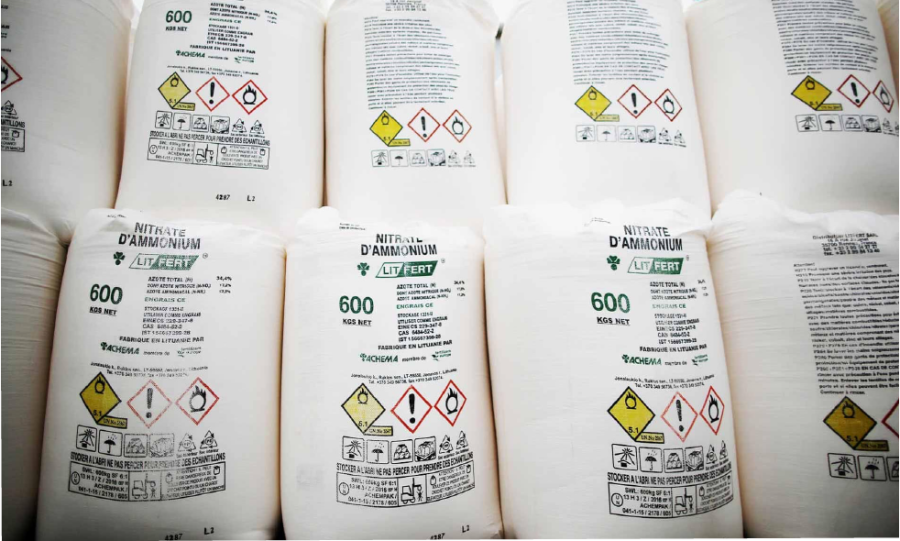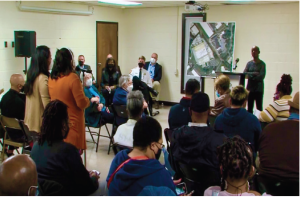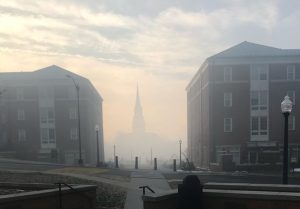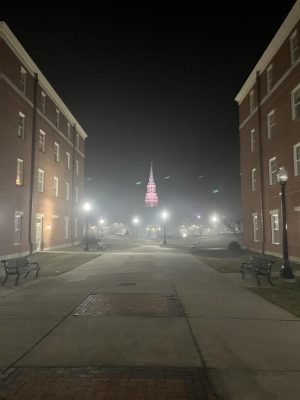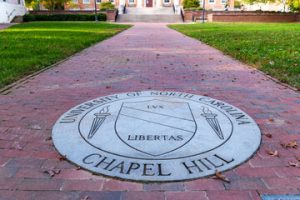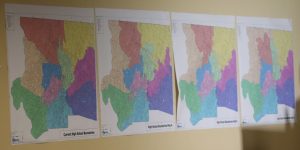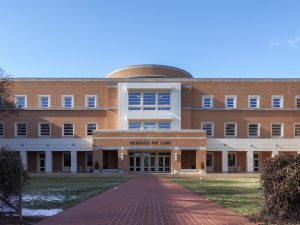Evaluating Wake Forest’s use of Weaver fertilizer
The Old Gold & Black investigates Wake Forest’s consumption of and connection to synthetic fertilizers
Despite government warnings about health, safety and environmental hazards, the synthetic fertilizer ammonium nitrate is still widely used in the U.S.
March 2, 2022
Ammonium nitrate, the synthetic fertilizer produced at the Weaver fertilizer plant, has been responsible for numerous devastating explosions, raising serious concerns about its production, storage and use in Winston-Salem.
In 2013, an ammonium nitrate explosion in Texas caused U.S. authorities to re-examine federal rules meant to prevent such accidents. Former President Barack Obama released an executive order that pushed officials to reduce the risks of hazardous chemicals, but agricultural businesses lobbied to block broad amendments to the Environmental Protection Agency’s risk management program, according to The Center for Public Integrity.
When the EPA finally released its Chemical Disaster Rule, ammonium nitrate was not added to the list of “highly hazardous” chemicals.
Despite its potential for serious harm, ammonium nitrate is still a commonly used fertilizer for many large-scale agriculture operations, as well as on fields and manicured lawns, including those at Wake Forest University.
“The University applies an industry-standard Weaver 18-24-12 Slow Release Fertilizer for lawn feeding in spring and fall to promote healthy root and plant development,” Director of Environmental Health and Safety Stephen Fisenne wrote in an email. “This organic method eliminates the need for additional applications of synthetic fertilizer during the growing season and supports sustainability.”
The Weaver slow-release fertilizer used on campus was not sourced directly from the plant that caught fire the week of Feb 1., according to Fisenne. “There are a variety of vendors that provide fertilizers,” Fisenne said. “We did not get the fertilizer directly from the nearby Weaver plant, but through distributors who sell their product.”
He continued: “Most distributors already had fertilizer in stock for the spring season, from the various producers they work with. The current vendor used by Wake Forest is Green Resource in Winston-Salem.”
Although synthetic fertilizers are used on Wake Forest’s lawns, campus facilities work to make sure they are implemented in the most efficient, sustainable way possible. The synthetic fertilizer is used in combination with organic fertilizers, to minimize the need for the latter. Additionally, Fisenne said that “campus mowers are fitted with mulching devices that will chop grass clippings into small pieces that can slowly break down and contribute needed nitrogen to the soil. This organic method eliminates the need for additional applications of synthetic fertilizer during the growing season, and supports sustainability.”
Fisenne continued: “Compost and organic matter is used exclusively in flower beds, and for shrubs and trees. This allows us to re-use our own compostable material as fertilizer and ground cover for these plants, and also fits in with the University’s sustainability goals.” Fisenne went on to note that the over-application of synthetic fertilizer is a stormwater issue around the US. Excess nitrates from fertilizers can result in overstimulation of algae and fish kills.
On campus, in addition to being a waste of worker resources, over-fertilization is just as harmful as not fertilizing and results in damaged lawns and plants.
“Thankfully, this is not an issue at Wake Forest University as our Landscape professionals are aware of the correct application rates, based on timing, source and placement,” Fisenne said.
“Wake doesn’t store large quantities of synthetic fertilizers on campus. It is ordered as needed, and applied soon after shipment to eliminate any storage hazards.”
John Wise, Associate Vice President of Hospitality and Auxiliary Services, works as a liaison between campus dining and Harvest Table to coordinate food sourcing and sustainable dining operations. He echoed Fisenne’s claim that Wake Forest strives for progress, not perfection, in its sustainability practices.
“We need to reduce our dependence on synthetic fertilizers, since it isn’t possible to do away with them completely at the moment,” said Wise. “Right now, the supply chain doesn’t provide us with the ability to make one hundred percent of our products sustainably sourced without causing meal plan prices to go through the roof.”
In association with Harvest Table, campus dining works to find a balance between culinary excellence, variety of menus for students, sustainable sourcing, satisfaction and having engaged consumers. Campus dining strives to have their sources be Third-Party Verified (TPV), meaning the producer adheres to standards set by an independent organization such as how livestock are raised, how produce is grown and whether or not fertilizers are used.
“You might go to the grocery store and see some produce labeled ‘organic’, but what does that mean?,” Wise said. “Farmers and consumers might have different definitions of what organic looks like, and that’s why we rely on a third party to set those standards and we source our food from farmers whose practices follow that ruleset. Within the term ‘Certified Organic’, the ‘certified’ comes from the third party.”
Synthetic fertilizer use is not allowed within the standards of Harvest Table’s Third-Party Verified Certified Organic sources.
As of this year, roughly 35% of Wake Forest’s food sources were Third-Party Verified. The U.S. collegiate norm is less than 10%.
However, as Wise noted, this doesn’t mean 35% of Wake Forest’s food is Certified Organic.
“We are 35% certified sustainable,” Wise said. “That sustainability umbrella includes Certified Organic, but another portion is Certified Fair Trade — are we buying from farmers who are paying fair wages, and are able to conduct their business in a way that allows them to earn a living? These things are all part of the sustainable-sourcing goal that we work towards.”
Sustainably-sourced food is only part of the journey towards decreasing economic demand for synthetic fertilizers. Brian Cohen, Assistant Director of Sustainability Engagement at Wake Forest, noted that educating students about where their food comes from and how it is grown is paramount.
“It is immensely important to educate students on why sustainably sourced food is important. Once students move off-campus and start buying their own groceries, they become part of the demand-side of economics,” Cohen said.
He continued: “It’s great that, for students eating at the pit, a lot of those sustainability-related decisions have been made for them, in terms of how we sustainably source a lot of our food. There are still decisions they can make, however, that are impactful, such as eating a plant-forward diet.”
Plant-forward dining has been largely advertised by the Office of Sustainability for the past few years. It promotes eating more plants (fruits, vegetables, and plant-based proteins) and fewer animal products, instead of vegetarianism or veganism, which eliminates most animal products entirely.
“Plant-forward dining is the biggest area of growth our office has seen in terms of student knowledge and understanding of how they can make an impact with regards to sustainability and agriculture,” Cohen said.
“If students want to make an impact and support sustainability instead of synthetic fertilizer reliance, then plant-forward dining is a great place to start.”



